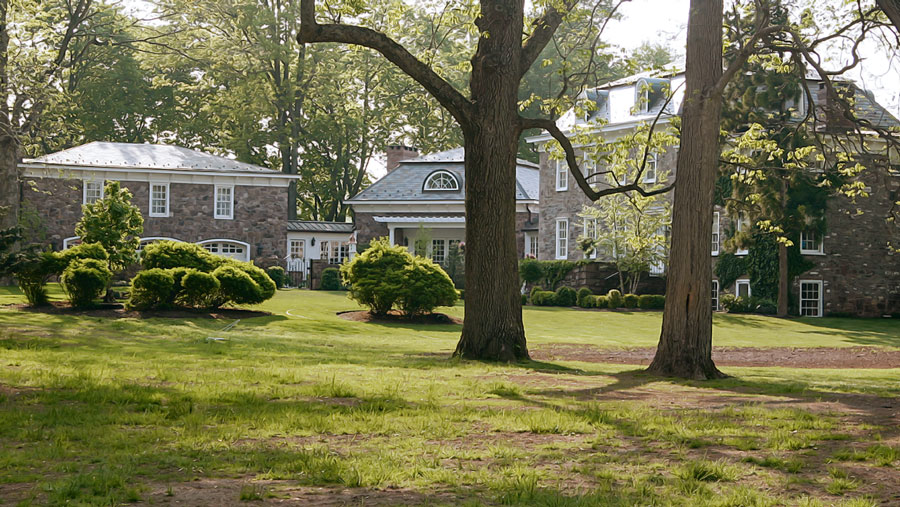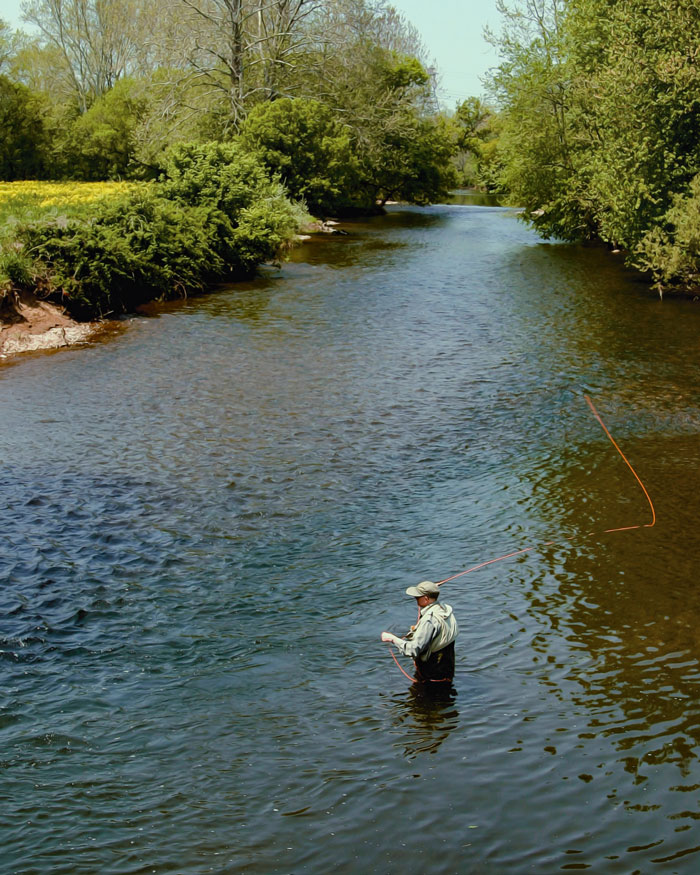A good place to begin your appreciation of the South Branch is at Echo Hill Park just south of Clinton. Take Route 31 south to Stanton Station Road, then your first right at Lilac and look for the park entrance on your right. In 1936 Robert and Hermia Lechner purchased the farm here and built a summer camp for boys and girls. Materials from the old farm buildings were salvaged for use in the camp cabins and lodges, and 200,000 evergreens planted by the Civilian Conservation Corps replaced the farm orchards in 1939. The Lechners also bought and moved the Stanton Station Railroad Station to the property for re-use at the camp. The stone farmhouse became the camp's infirmary until the couple made it their home in 1942. It was the beginning of Hermia Lechner's long love affair with the South Branch of the Raritan River.

In 1959 the Lechners retired from the camp and donated it to the Presbyterian Church. It was also the year that Hermia founded the South Branch Watershed Association. In 1959, "watershed" was something less than a household word. The first Earth Day was fifteen years away, World War II fifteen years before. Suburbia lurked far from the rural Hunterdon hills, and the word "sprawl" had no association with housing patterns. The Lechners had already worked for years, teaching kids about the environment and about the South Branch that flowed by the camp. The Association's mission would be "to raise public awareness to the fact that a river is a treasure...not to be taken for granted." The group began to promote the establishment of environmental commissions and produce natural resource inventories for watershed municipalities.
One of the organization's first initiatives was to promote the establishment of Hunterdon County Park Commission through the acquisition of the river's flood plains and surrounding lands for the South Branch Reservation, which today includes over 1,000 acres with access to the river at several points. In 1973 the Commission acquired the Echo Hill Property around the Lechner home. Until her death in 1994, Ms. Lechner remained active in the Association as President and later as a Trustee while she served for many years as mayor of Clinton Township. In 1997 the SBWA moved their headquarters into the stone farmhouse where Hermia Lechner lived and worked. In 2011 the SBWA combined with the Upper Raritan Watershed Assn to form today's Raritan Headwater Association (RHA) with headquarters in Bedminster.

The South Branch is the origin of the largest drainage area located entirely within New Jersey, 1,100 square miles that supply water for millions of people. Of these, 276 square miles define the watershed for the South Branch itself. Since the SBWA's founding, the two largest reservoirs in the state have been built at Round Valley and Spruce Run. Their function is to maintain sufficient levels in the big ditch, the Raritan River, for customer needs, while maintaining targeted flow requirements in the river. At full capacity the two impoundments store 66 billion gallons, integral parts of a water supply system that also consists of the Delaware & Raritan Canal Transmission Complex and is capable of delivering 225 million gallons of raw water per day to the water utilities that serve central New Jersey. But neither is connected to a treatment facility by way of a water main. Spruce Run, gravity fed by a 40-square-mile watershed, is usually tapped before Round Valley, which sits at the top of a hill. Almost all of the water that goes into Round Valley has to be pumped there, some coming from a station upstream from Echo Hill and south of the intersection of Hamden and Lower Landsdown Road. Check your map.
But these reservoirs supply water to the cities to the north and east, not to the residents of the watershed who depend largely on groundwater for their water supply. Although the downstream communities and natural resources benefit as a result, the RHA's mission and work is focused in the 25 municipalities in Morris, Hunterdon and Somerset counties that host the South Branch.
If you leave Echo Hill and continue south on Route 31, turn left on Bartle's Corner Road just north of Flemington and look for River Road on your left. Along this road, the 26-acre Assicong Marsh is refuge for muskrats, frogs, waterfowl and a regular procession of migratory birds. You can see herons, shorebirds, mallards, black ducks, wood ducks, pintails and the ever-present Canada geese only steps from the parking area. The tranquil scene is an acute shift from the congestion a half mile south where Routes 31 and 202 meet at the notorious Flemington traffic circle. The South Branch Parkway has been proposed, and debated, as a by-pass from Bartle's Road over to Route 202. The Associaton supports "a design shift from traffic and growth centric to one that is more ecologically based by giving more weight to the preservation and enhancement of stream buffers, wildlife corridors and groundwater recharge as well as preserving important soils, vegetation, scenic vistas and historic elements. This project could serve as an example for smart development by preserving and enhancing natural features rather than promoting sprawl." It's complicated. Support your local watershed association.

Artisanal cheeses, wood fired breads, 100% grass-fed beef, whey fed pork, and suckled veal, 100% grass-fed ice cream, pasta made with Emmer wheat and our own free-range eggs, and pesto made with our own basil! Bread and cheesemaking workshops are held on the working farm as well as weekend tours and occasional concerts.

Delightful fantasies beyond words! Gold, Platinum & Silver Jewelry, Wildlife Photos, Crystal, Lighthouses. Perfume Bottles, Santas, Witches Balls, Oil Lamps, Paperweights, Chimes, Art Glass, Wishing Stars. Also offering jewelry and watch repair